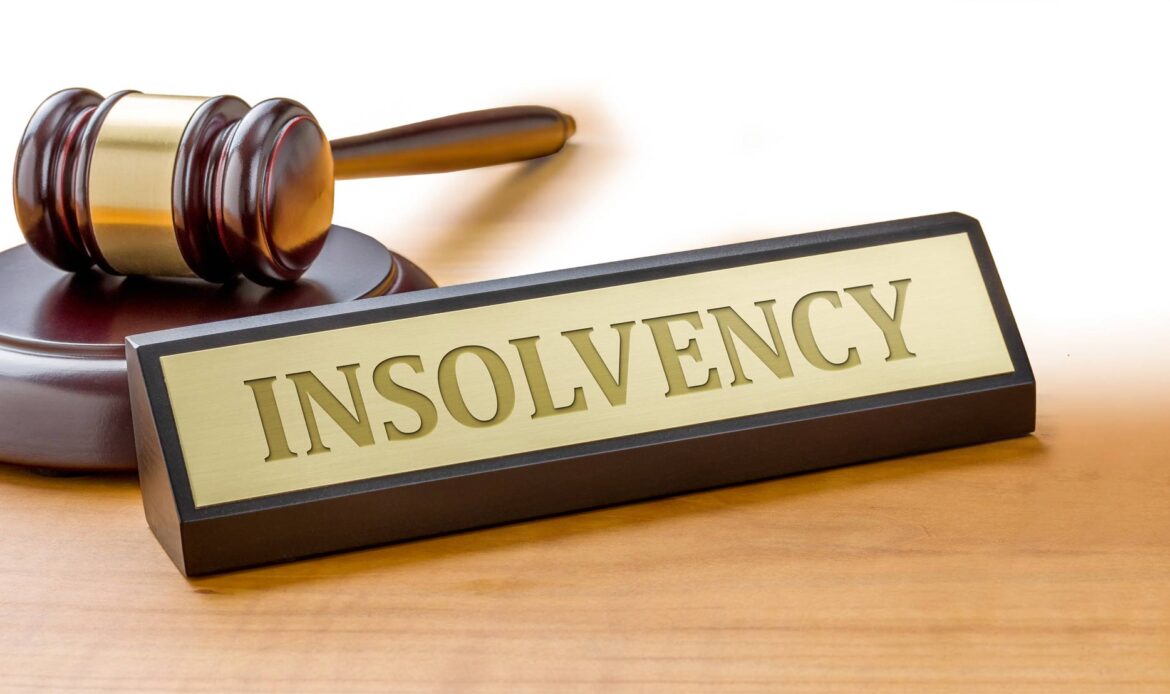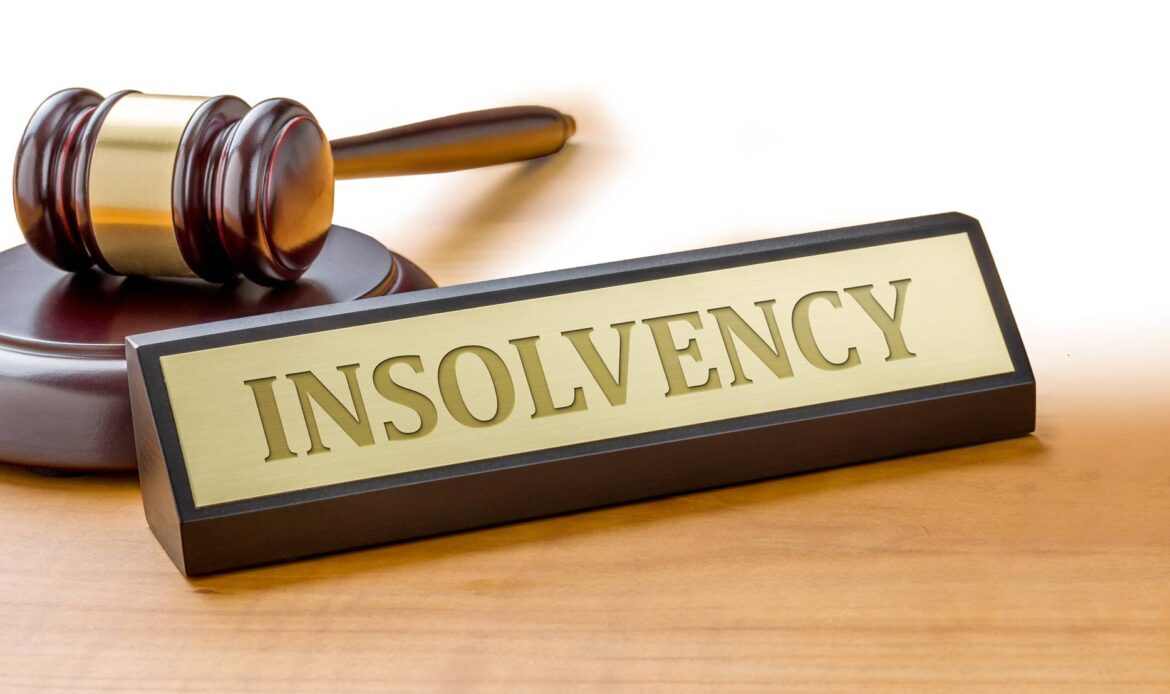
Cracking Code: Mastering The Complexities Of Cross-Border Insolvency With Smart Legal Strategies
INTRODUCTION
Cracking the Code – The Strategic Legal Evolution in Handling Cross-Border Insolvency Issues
Cross-border insolvency has emerged as one of the most challenging yet fascinating fields in international commercial law. The globalized nature of trade and investment has created a complex web of interconnected economic relationships. As a result, when businesses become insolvent, their financial distress often transcends national borders. What follows is a legal quagmire—assets are scattered across multiple jurisdictions, creditors are located in various countries, and domestic laws conflict in terms of recognition, treatment, and procedure.
This intricate legal and commercial dynamic poses significant risks—not just for the insolvent entities but also for creditors, investors, legal practitioners, and regulators alike. With jurisdictions adopting different stances on insolvency laws, the process of resolving international insolvency cases becomes fraught with legal uncertainties and operational roadblocks.
The term cross-border insolvency refers to a scenario where an insolvent debtor has assets, liabilities, or creditors located in more than one country. Such cases often involve determining the applicable jurisdiction, recognizing foreign insolvency proceedings, and coordinating among courts in multiple countries. The need to balance the sovereignty of national legal systems with the goals of universalism and cooperation has been at the heart of global legal reform efforts.
Why This Matters More Than Ever
The rise in multinational corporate structures, international trade agreements, foreign direct investment, and offshore banking has made cross-border insolvency not just a niche legal subject but a major concern in global economic governance. Major corporate collapses like Lehman Brothers, Enron, and recently, Evergrande, brought to the fore the difficulties legal systems face when trying to harmonize insolvency resolutions across borders.
Nigerian legal practitioners, corporate executives, and financial regulators are no longer insulated from these global dynamics. With Nigerian companies increasingly participating in global financial markets and foreign investors channeling funds into local enterprises, cross-border insolvency is no longer a theoretical issue—it is a pressing reality.
Universalism vs. Territorialism – A Legal Tug of War
At the core of cross-border insolvency is the tension between two major approaches: universalism and territorialism. Universalism supports a single, centralized insolvency proceeding conducted in the debtor’s home jurisdiction with global recognition and cooperation. Territorialism, on the other hand, argues for each country to deal with the debtor’s assets located within its borders according to its domestic laws.
While universalism promises greater efficiency and fairness through unified administration, territorialism protects local interests and sovereignty. The practical response to this ideological divide has been the emergence of the modified universalism model—a hybrid that acknowledges the need for coordination while allowing some degree of domestic control.
International Legal Frameworks: The UNCITRAL Model Law
Efforts to create a harmonized legal framework culminated in the United Nations Commission on International Trade Law (UNCITRAL) Model Law on Cross-Border Insolvency, adopted in 1997. The Model Law aims to facilitate cooperation, enable recognition of foreign proceedings, protect creditors’ rights, and promote fair and efficient administration of cross-border insolvency cases.
Though over 50 jurisdictions have enacted laws based on the Model Law, Nigeria has yet to fully integrate it into its legal system, although reforms are underway. This gap exposes Nigerian stakeholders to legal risks and procedural delays when dealing with insolvency cases involving foreign elements.
Nigeria’s Legal Landscape: Progress and Pitfalls
The Nigerian insolvency framework, rooted in the Companies and Allied Matters Act (CAMA), has traditionally focused on domestic insolvency. However, recent amendments and ongoing advocacy suggest a growing recognition of the importance of cross-border insolvency reform.
Nonetheless, the lack of clear statutory provisions addressing recognition of foreign insolvency proceedings, coordination between courts, and asset tracing across jurisdictions continues to pose challenges. Nigerian courts and practitioners often rely on common law principles, treaties, and judicial discretion to navigate these murky waters—an approach that is neither predictable nor efficient.
Emerging Trends and Opportunities
Despite these challenges, new developments offer hope. The push for insolvency reform in Nigeria, the involvement of Nigerian firms in international restructuring cases, and growing judicial awareness indicate a gradual evolution. Furthermore, with the increase in foreign investment and international financing arrangements, Nigeria cannot afford to remain an outlier in global insolvency practice.
Legal Practitioners: The Frontline Architects of Reform
The role of legal professionals is critical in this transformation. By mastering comparative insolvency laws, advocating for statutory reform, and leveraging international best practices, Nigerian lawyers can ensure their clients are well-positioned in cross-border insolvency matters. They must also stay abreast of global case law trends, network with international firms, and adopt digital tools for asset tracing and legal coordination
In an increasingly interconnected global economy, cross-border insolvency issues have become more common and complex. Companies with international operations, multinational creditors, and debtors often face significant challenges when insolvency arises in multiple jurisdictions. The legal frameworks, regulations, and cultural attitudes towards insolvency can vary drastically between countries, making it critical to understand how to effectively handle cross-border insolvency issues. This article explores the key aspects of cross-border insolvency, the challenges it poses, and the solutions offered by international cooperation and legal frameworks.
What is Cross-Border Insolvency?
Cross-border insolvency occurs when an insolvent entity or individual has assets, creditors, or business operations in more than one country. These situations often involve multinational corporations, financial institutions, or even individual debtors who have global financial dealings. The complexity of cross-border insolvency stems from the differences in insolvency laws and practices across jurisdictions, which can lead to conflicting interests between creditors, debtors, and local governments.
A typical scenario might involve a company headquartered in one country, with operations, assets, and creditors in several other nations. If the company becomes insolvent, the insolvency proceedings may need to take place simultaneously in multiple jurisdictions. This raises questions about which country’s laws take precedence, how assets should be distributed, and what rights creditors in different countries have.
Key Challenges in Cross-Border Insolvency
The handling of cross-border insolvency issues is fraught with challenges. Some of the most significant include:
1. Jurisdictional Conflicts
One of the primary challenges of cross-border insolvency is determining which jurisdiction’s laws apply to the proceedings. Different countries have different insolvency laws, and these laws may conflict with one another. For example, a debtor-friendly jurisdiction might offer significant protections to insolvent companies, while a creditor-friendly jurisdiction may prioritize quick liquidation and repayment to creditors.
Jurisdictional conflicts can lead to lengthy legal battles as parties argue over which country has the right to control the insolvency proceedings. In some cases, courts in different countries may issue conflicting rulings, further complicating the situation.
2. Recognition of Foreign Insolvency Proceedings
Another major challenge in cross-border insolvency is the recognition of foreign insolvency proceedings. Not all countries automatically recognize insolvency proceedings initiated in other jurisdictions. Without mutual recognition, it can be difficult to coordinate efforts between different countries, leading to inefficiencies, delays, and additional legal costs.
In some cases, countries may have treaties or agreements in place to facilitate the recognition of foreign insolvency proceedings, but in others, courts may be reluctant to recognize and enforce decisions made in another jurisdiction. This lack of recognition can undermine the efficiency of cross-border insolvency processes and limit creditors’ ability to recover their claims.
3. Differences in Insolvency Laws
The variation in insolvency laws across countries adds complexity to cross-border cases. Some jurisdictions may prioritize secured creditors, while others may offer protections to unsecured creditors or even employees. The treatment of assets, priority of claims, and discharge of debts can vary significantly, creating confusion and conflict.
For example, a company with assets in multiple countries may be subject to liquidation in one jurisdiction and reorganization in another. Different legal frameworks and priorities can make it difficult to coordinate a single, unified approach to insolvency resolution.
4. Asset Recovery and Distribution
In cross-border insolvency, recovering and distributing assets located in different countries can be a logistical and legal challenge. Laws governing asset recovery and distribution can differ substantially between jurisdictions, leading to complications in the allocation of assets to creditors.
Some countries may have restrictions on the repatriation of funds or assets, or they may impose taxes or fees on cross-border transfers, reducing the amount available for distribution to creditors. Moreover, certain jurisdictions may prioritize local creditors, leaving foreign creditors with a smaller share of the recovered assets.
5. Fraud and Forum Shopping
In cross-border insolvency, the risk of fraud and abuse is heightened. Debtors may engage in “forum shopping,” which involves transferring assets or relocating business operations to jurisdictions with more favorable insolvency laws. This tactic can frustrate creditors’ efforts to recover debts and undermine the fairness of the insolvency process.
Similarly, fraudulent transfers of assets across borders can complicate the recovery process. Debtors may hide assets in countries with weak insolvency laws, making it difficult for creditors to trace and recover them.
Legal Frameworks for Handling Cross-Border Insolvency Issues
Despite the challenges posed by cross-border insolvency, several legal frameworks and international treaties have been developed to address these issues and promote cooperation between countries. These frameworks aim to provide clarity, coordination, and fairness in cross-border insolvency proceedings.
1. UNCITRAL Model Law on Cross-Border Insolvency
One of the most important legal frameworks for handling cross-border insolvency is the UNCITRAL Model Law on Cross-Border Insolvency, developed by the United Nations Commission on International Trade Law (UNCITRAL). The Model Law provides a framework for cooperation between countries in cross-border insolvency cases, promoting the recognition of foreign insolvency proceedings and the coordination of efforts between courts and administrators.
The Model Law has been adopted by several countries, including the United States, the United Kingdom, and Australia, among others. It provides a basis for countries to recognize foreign insolvency proceedings, allow foreign representatives to participate in local proceedings, and cooperate with courts in other jurisdictions. The Model Law also aims to ensure the fair and efficient administration of cross-border insolvency cases, protecting the interests of both creditors and debtors.
2. European Union Insolvency Regulation
Within the European Union, the EU Insolvency Regulation plays a key role in managing cross-border insolvency within the bloc. The regulation aims to harmonize insolvency laws across EU member states and provide clear rules for determining jurisdiction in cross-border cases. It establishes that the main insolvency proceedings should be initiated in the country where the debtor’s “center of main interests” (COMI) is located.
The regulation also promotes the recognition of insolvency proceedings across EU member states, allowing for efficient coordination between different jurisdictions. Additionally, it includes provisions for secondary proceedings, which may be initiated in other countries where the debtor has significant assets, ensuring that local creditors are protected while maintaining the overall coherence of the insolvency process.
3. Cross-Border Insolvency Protocols
In addition to international legal frameworks, cross-border insolvency protocols are often used to facilitate cooperation between courts and administrators in different countries. These protocols are case-specific agreements that outline how courts and parties in different jurisdictions will cooperate and share information during the insolvency process.
Cross-border insolvency protocols can help resolve jurisdictional conflicts, coordinate asset recovery and distribution, and ensure that the insolvency proceedings are fair and efficient. By promoting communication and collaboration between jurisdictions, these protocols can mitigate some of the challenges associated with cross-border insolvency.
Best Practices for Handling Cross-Border Insolvency
Handling cross-border insolvency issues requires a strategic and well-coordinated approach. Some best practices for managing these complex cases include:
1. Early Engagement with Legal and Financial Experts
Cross-border insolvency cases are highly complex and often involve multiple legal, financial, and logistical considerations. It is essential to engage with experienced legal and financial experts early in the process to develop a clear strategy for navigating the insolvency proceedings in different jurisdictions.
2. Coordinated Communication between Jurisdictions
Clear and consistent communication between courts, administrators, and legal representatives in different jurisdictions is essential for the successful resolution of cross-border insolvency cases. Courts and parties involved should seek to establish communication protocols early in the process to ensure that information is shared effectively and that decisions are coordinated across jurisdictions.
3. Adherence to International Legal Frameworks
Wherever possible, parties should seek to rely on established international legal frameworks, such as the UNCITRAL Model Law on Cross-Border Insolvency or regional agreements like the EU Insolvency Regulation. These frameworks provide a clear structure for managing cross-border insolvency and can help resolve jurisdictional conflicts, promote cooperation, and ensure a fair distribution of assets.
4. Transparency and Cooperation
Transparency and cooperation between debtors, creditors, and administrators are critical for resolving cross-border insolvency cases. Debtors should be forthcoming about their assets, liabilities, and business operations, while creditors and administrators should work collaboratively to develop a fair and efficient insolvency plan.
Conclusion
Handling cross-border insolvency issues requires a deep understanding of international insolvency laws and the challenges associated with multiple jurisdictions. With the growing globalization of business, the ability to navigate these complex cases is more important than ever. By adhering to international legal frameworks, promoting cooperation between jurisdictions, and engaging with experienced legal and financial professionals, creditors and debtors can effectively manage cross-border insolvency and achieve fair outcomes for all parties involved.
IThe landscape of cross-border insolvency is no longer a theoretical battlefield of academic concepts but a real-world legal frontier that demands urgent attention. As global economic activities continue to interweave national markets and financial systems, the need for a cohesive and robust framework to manage cross-border insolvency has never been more crucial.
In the introduction, we explored the foundational challenges, legal approaches, and evolving frameworks. Now, let us consolidate our insights and chart a strategic blueprint that Nigerian stakeholders can adopt to mitigate risks and seize opportunities in international insolvency proceedings.
Recognizing the Reality of Global Interdependence
The first step towards effective handling of cross-border insolvency is an open acknowledgment of our economic interdependence. A business collapse in China, Europe, or the U.S. can trigger ripple effects that impact creditors, suppliers, and stakeholders in Nigeria. This global financial interconnectedness necessitates laws that are globally responsive and locally adaptable.
Nigeria can no longer rely solely on its domestic legal instruments to resolve insolvency cases involving foreign parties. The status quo leaves room for forum shopping, inconsistent judgments, and protracted legal disputes. Therefore, strategic reform is not optional—it is essential.
Urgent Legal Reforms: From Aspiration to Action
The Nigerian legal system must formally adopt the UNCITRAL Model Law on Cross-Border Insolvency. This step would align the country with international best practices, enable recognition of foreign proceedings, and establish a statutory basis for judicial cooperation.
Additionally, the Bankruptcy and Insolvency Act should be updated to provide clear procedures for cross-border cases, including automatic stays, asset repatriation, creditor coordination, and recognition of foreign representatives.
Judicial training, legislative engagement, and stakeholder dialogue should accompany these reforms to ensure smooth implementation. These reforms would not only facilitate faster resolution of insolvency cases but also enhance Nigeria’s reputation as an investor-friendly jurisdiction.
Role of Technology in Modern Insolvency Practice
Digital tools are redefining legal processes. From blockchain-based asset tracing to AI-powered legal analytics, technology offers immense potential in simplifying cross-border insolvency resolutions. Nigerian legal practitioners must harness these tools to improve documentation, automate repetitive tasks, and track assets across borders with speed and accuracy.
Furthermore, cloud-based platforms can facilitate real-time communication between lawyers, administrators, and courts in different jurisdictions. This digital transformation will be pivotal in ensuring transparency, consistency, and efficiency in international insolvency matters.
Legal Education and Capacity Building
One of the silent challenges in handling cross-border insolvency is the knowledge gap. Many Nigerian lawyers are unfamiliar with international insolvency procedures, foreign case law, or the nuances of the Model Law. Law schools, professional institutes, and bar associations must include cross-border insolvency modules in their curricula and offer continued legal education programs focused on comparative insolvency law.
In addition, internship exchanges and collaborations with foreign law firms and insolvency bodies will give young lawyers firsthand exposure to global insolvency practices.
Collaboration: The Keystone of Success
Cross-border insolvency resolution cannot thrive in isolation. It requires collaborative frameworks between regulators, courts, insolvency practitioners, and legal professionals. Nigeria must actively participate in regional and global dialogues on insolvency reform. Engagement with institutions such as INSOL International, World Bank, and UNICTRAL working groups will help Nigeria stay aligned with global trends and shape future policy directions.
Conclusion: Lighting the Path Forward
Handling cross-border insolvency issues may seem like an uphill battle, but with the right legal, institutional, and technological strategies, success is within reach. For Nigeria to position itself as a reliable participant in global finance, it must harmonize its laws, train its professionals, and embrace international cooperation.
By integrating the principles of modified universalism, aligning with global legal standards, and deploying modern tools, Nigeria can not only navigate but also lead in the evolving world of cross-border insolvency. In the long run, such bold steps will strengthen investor confidence, protect creditor interests, and solidify Nigeria’s standing in the global legal order.
Contact Us
For premier legal research services in commercial law cases in Nigeria, contact Chaman Law Firm today. Our offices are conveniently located in Lagos, FCT Abuja, Ogun State, and the UK. We are readily available to assist you with your legal needs. Whether you require consultation, representation, or ongoing legal support, Chaman Law Firm is your trusted partner in navigating Commercial law in Nigeria.
Call us at 08065553671 or email us at info@chamanlawfirm.com to schedule a consultation.
- Corporate Law
- Bankruptcy Law
- Contract Law
- Secured Transactions Law
- Cross-Border Insolvency Law
Chaman Law Firm: Your Trusted Legal Partner in Commercial Law
By choosing Chaman Law Firm, you are selecting a team of dedicated professionals committed to providing exceptional commercial legal services tailored to your unique needs. Let us be your advocate and guide in the complex world of commercial law, ensuring your interests are protected and your goals are achieved.


